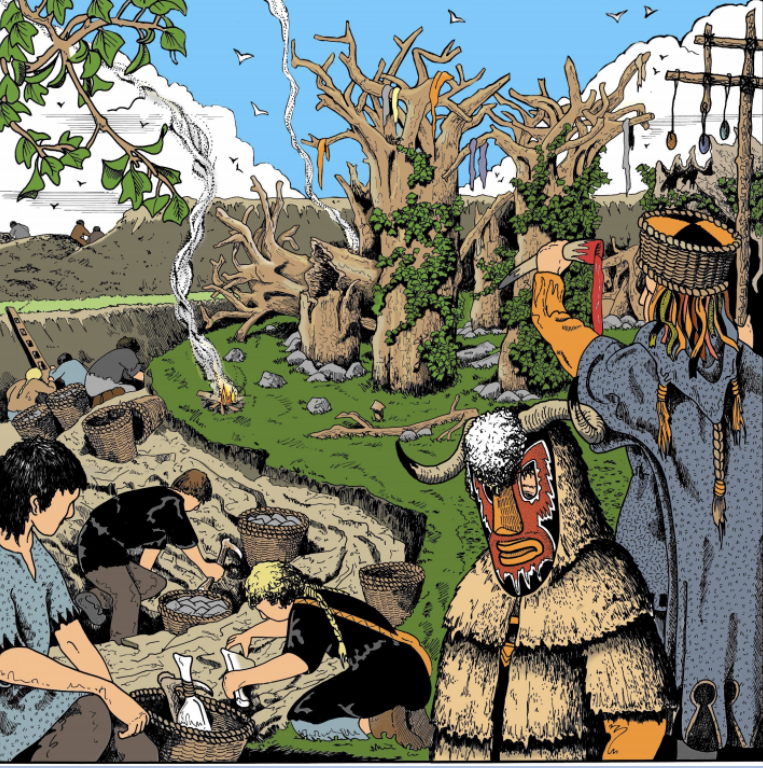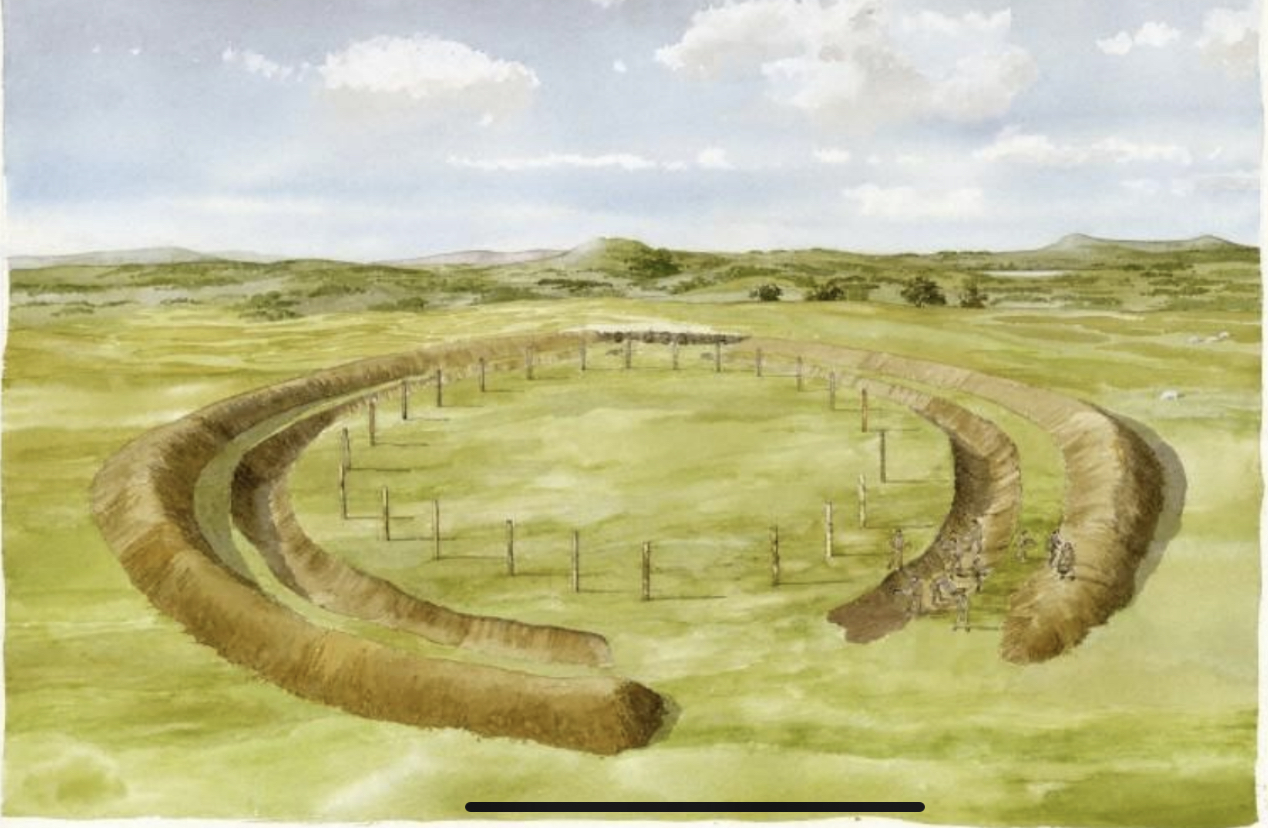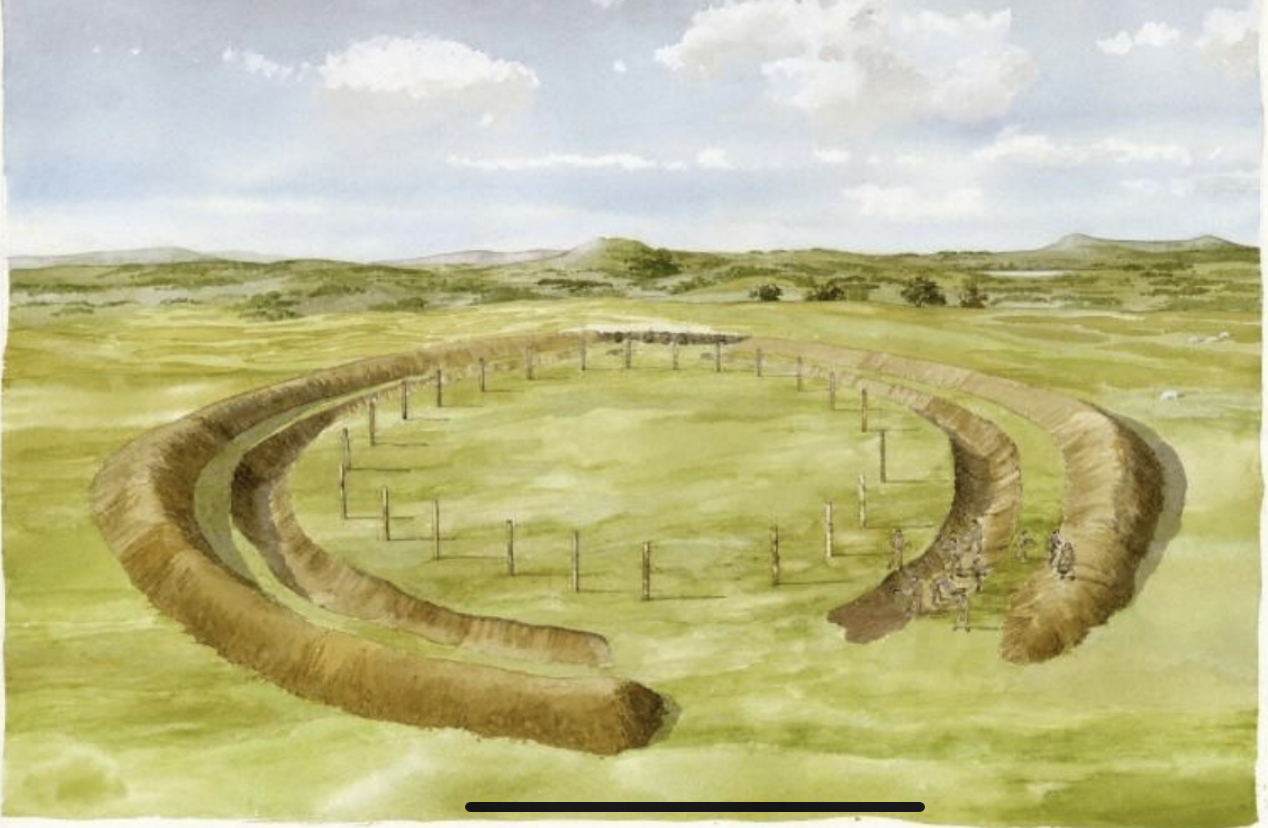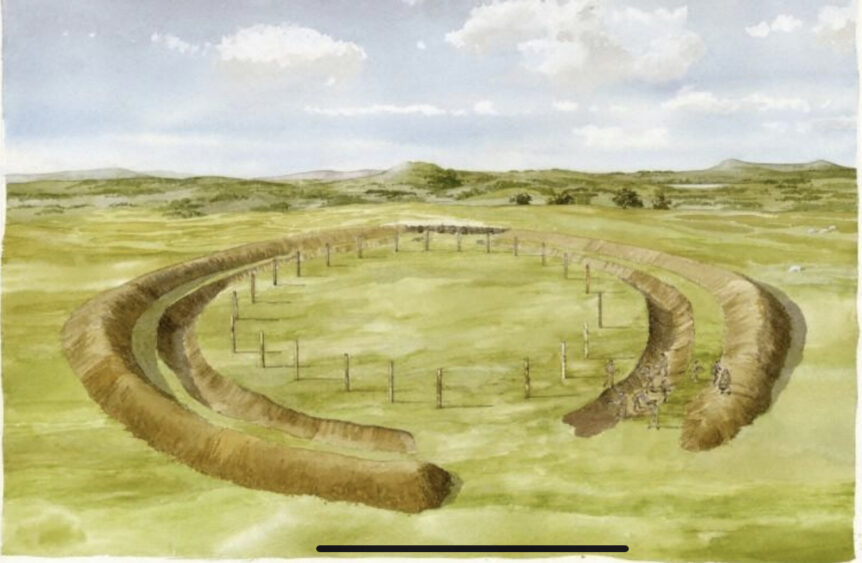Over 80 timber circles have been documented within the Scottish archaeological record, varying in size from 2.5m to over 75m. The majority of these monuments were constructed during the Later Neolithic, c. 3000 – 2450 BCE, and are located within extensive ceremonial centres, and as singular monuments.
Archaeologists are still uncertain as to how timber circles would have looked. The posts may have been adorned with carved images or have had ritual gifts dangling from branches. They may have been highly coloured, or have been completely stripped of bark, leaves and branches, presenting an extremely stark vision.
A number of these circles were subsequently added to during the Chalcolithic period, c. 2450 – 2150 BCE. At Cairnpapple Hill, West Lothian; North Main, and Forteviot, both located in Perth & Kinross, henges were dug to enclose the timber uprights.

Looking To The Past
What drove people to dig henges at monumental sites which would have been in advanced states of ruination and decay? Was there an intense need during the Chalcolithic to reconnect with a past that was, by then, considered remote and distant?
“Does cutting into a former monument or site, modifying it, mixing the past and present, signal a greater sense of a break with the past?”
Lucas 2005, 88
Younger has suggested that the creation of henges at timber circles was an active form of commemoration which referred to the past whilst creating new memories for the construction workers, both collectively and individually. In addition, I believe that the biographies of individuals, communities, and the monument as a whole, became interwoven both physically and temporally.

Memories Created Through Collective Remembering
It is evident that timber circles were repeatedly modified, even after they had fallen into a physical state of ruination and decay. Henges were merely one feature within the protracted biographies of monuments. These were spaces which were subject to numerous physical and metaphorical changes. These later additions would also be subject to the passing of time, being left to silt up and corrode.
This suggests that both timber posts and henges were observed as corporeal expressions of temporal transience. However, although social and spiritual perceptions of these locales may have changed through the passing of time, the past was always significant to later communities who continued to return to, and modify, these monuments.
By constructing anew around an older monument, builders were not just looking to the past, they were also considering both the present and the future. By building a henge the workers would have been conscious of the construction work undertaken by previous groups, whilst also forming their own memories. These, in turn, would be commemorated by future communities.

The Past Is Key To The Present And The Future
The physical ruination and decay of individual posts, and timber circles as a whole, did not signify the passing of time in a negative way. By extending these monuments, through the formation of henges, the past was wrapped and contained within the new, yet, it wasn’t forgotten. Instead the past was commemorated, not only as a vital aspect of both individual and communal histories, but also as a key element of the present and the future.
The past is physically and metaphorically present within the new. It is central to the modified monument, and the community. Neolithic monuments, like Later Prehistoric cultures as a whole, were vital and evolving; providing different meanings for different people. There was, and is, no stasis. They represented the past, present and future.
Acknowledgements:
Many thanks to Matt Ritchie of Forestry and Land Scotland for providing images and support. This week’s blog is based upon a poster I presented at the University of the Highlands & Islands Ruination and Decay conference, held at UHI: Inverness, December 2019.
BIBLIOGRAPHY:
Barclay, G., 1999. Cairnpapple Revisited: 1948 – 1998. Proceedings of the Prehistoric Society , Volume 65, pp. 17 – 46.
Biddulph, K. & Ritchie, M., 2019. The First Foresters: Explore the Neolithic in Scotland’s Native Woods. Inverness: Forestry and Land Scotland.
Casey, E., 1987. Remembering: a Phenomenological Study. Bloomington, Indiana: Indiana University Press.
Downes, J., 2012. Chalcolithic and Bronze Age Scotland Panel Report: Scottish Archaeological Research Framework, Edinburgh: Society of Antiquaries of Scotland.
Lowenthal, D., 1985. The Past is a Foreign Country. Cambridge: Cambridge University Press.
Lucas, G., 2005. The Archaeology of Time. London & New York: Routledge.
Merion Jones, A., 2007. Memory and Material Culture. Cambridge: Cambridge University Press.
Middleton, D. & Edwards, D., 1997. Introduction. In: D. Middleton & D. Edwards, eds. Collective Remembering. London: Sage, pp. 1 – 23.
Noble, G., 2006. Neolithic Scotland: Timber, Stone, Earth and Fire. Edinburgh: Edinburgh University Press.
Sheridan, A. & Brophy, K., 2012. Neolithic Scotland Panel Report: Scottish Archaeological Research Framework, Edinburgh: Society of Antiquaries of Scotland.
Younger, R. K., 2016. Making Memories, Making Monuments: Changing Understandings of Henges in Prehistory and the Present. In: K. Brophy, G. MacGregor & I. Ralston, eds. The Neolithic of Mainland Scotland. Edinburgh: Edinburgh University Press, pp. 116 – 138.

